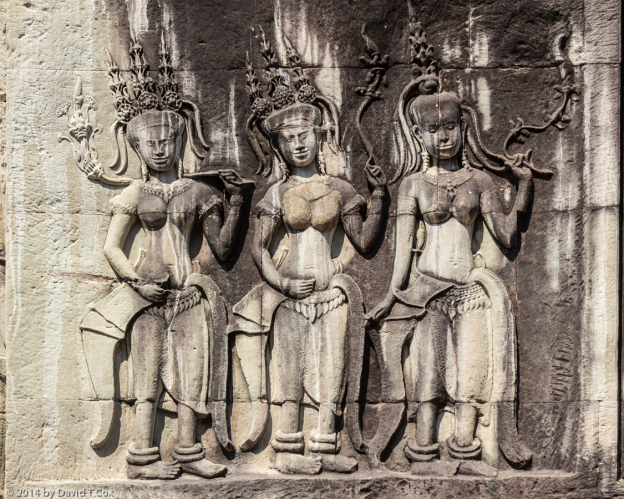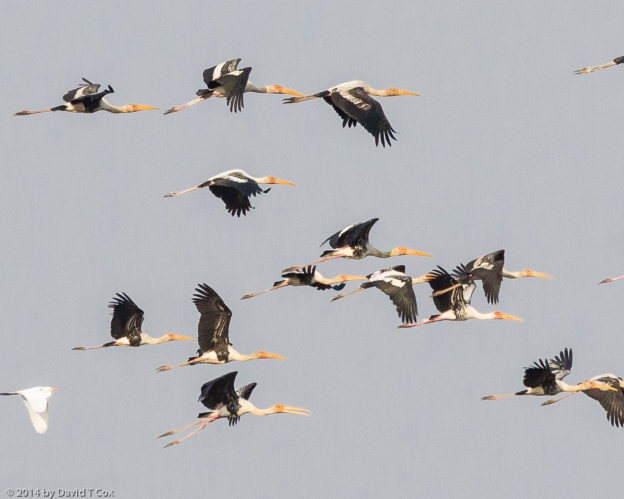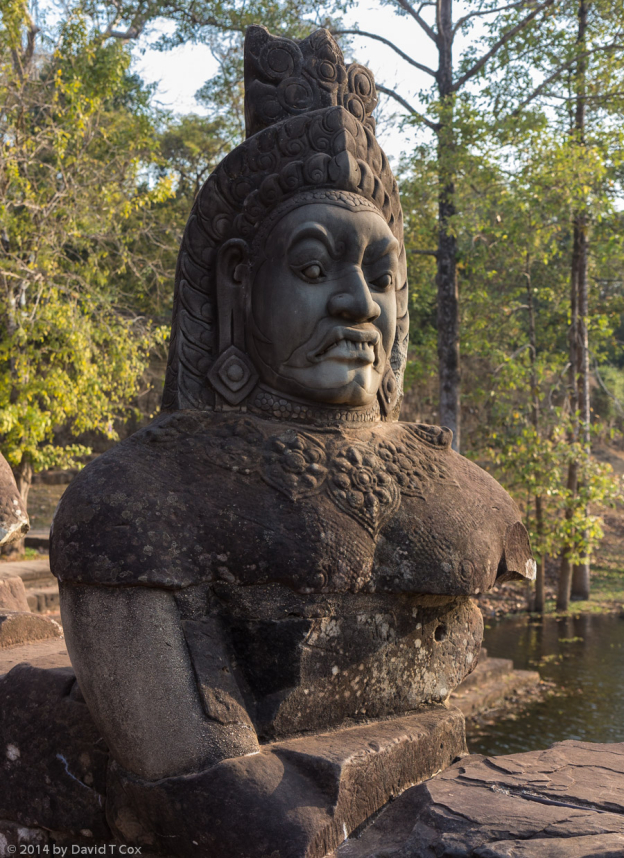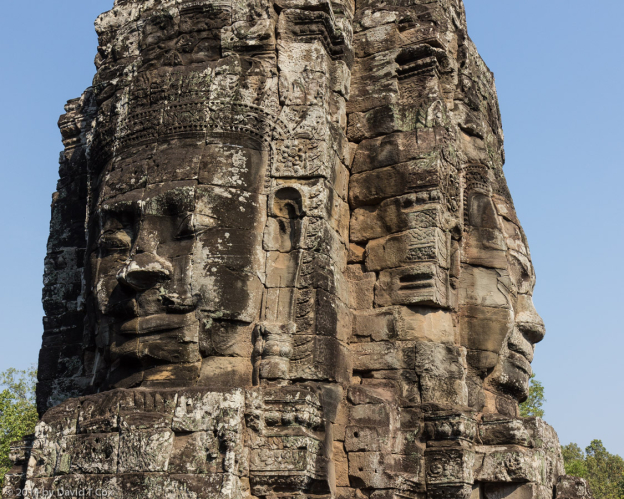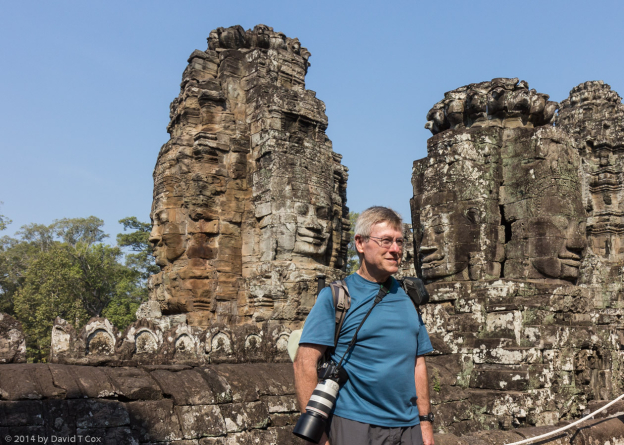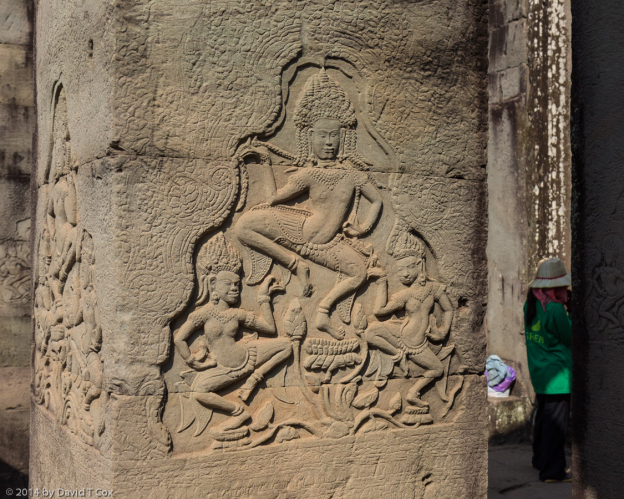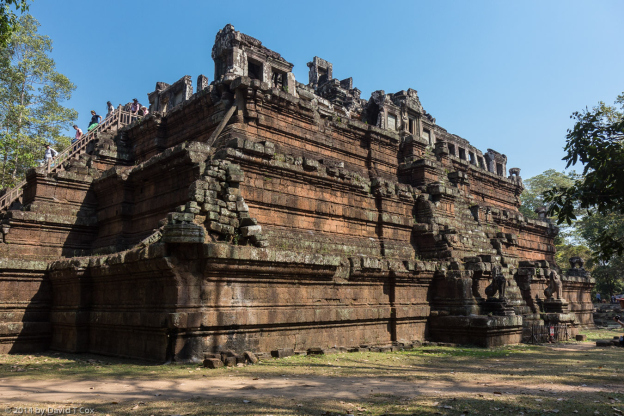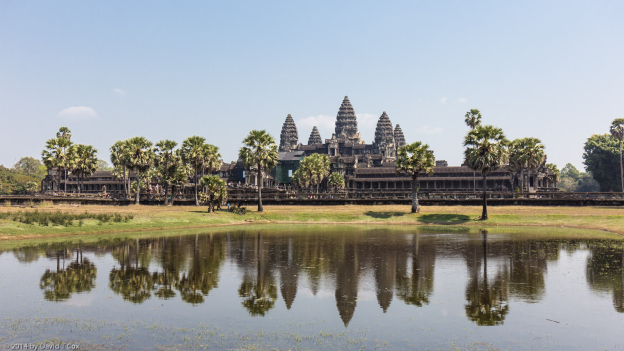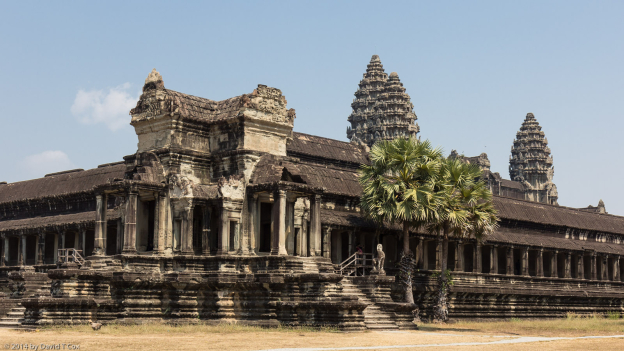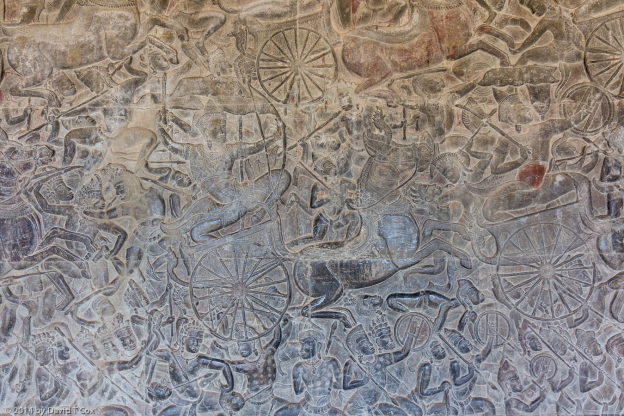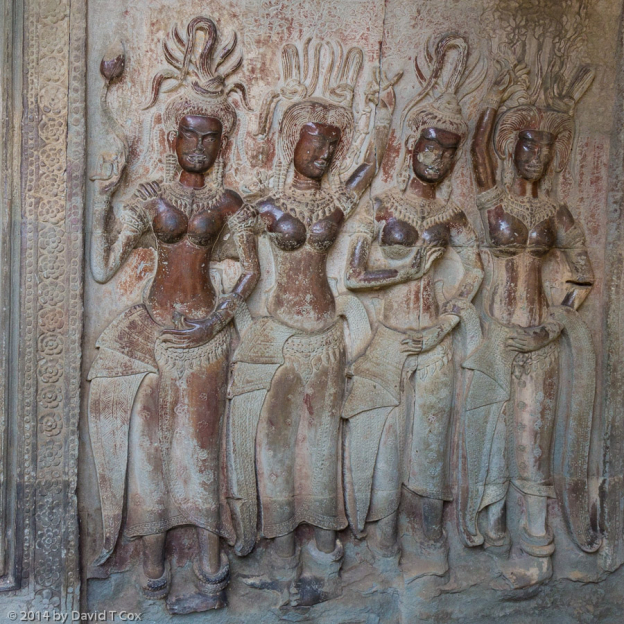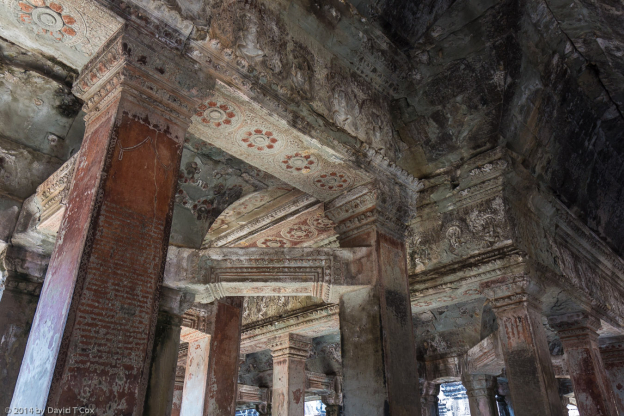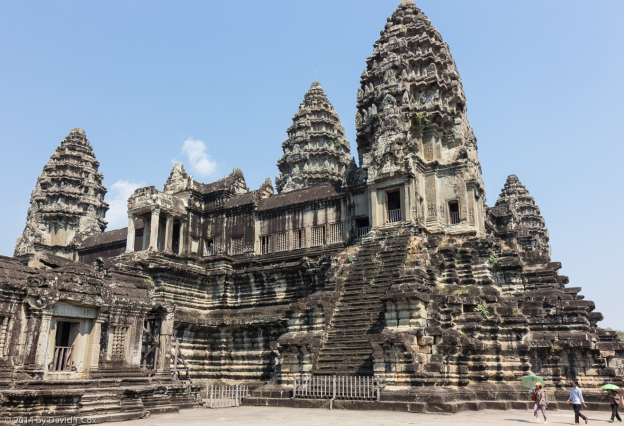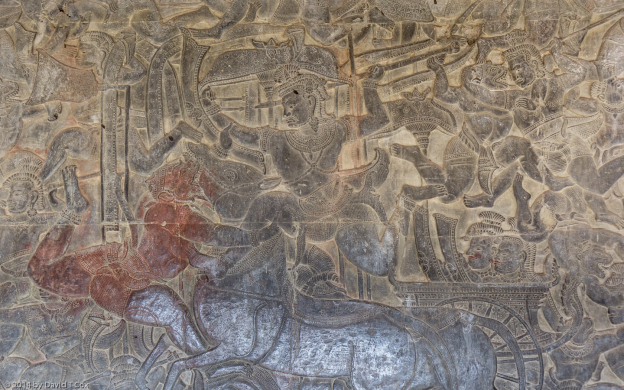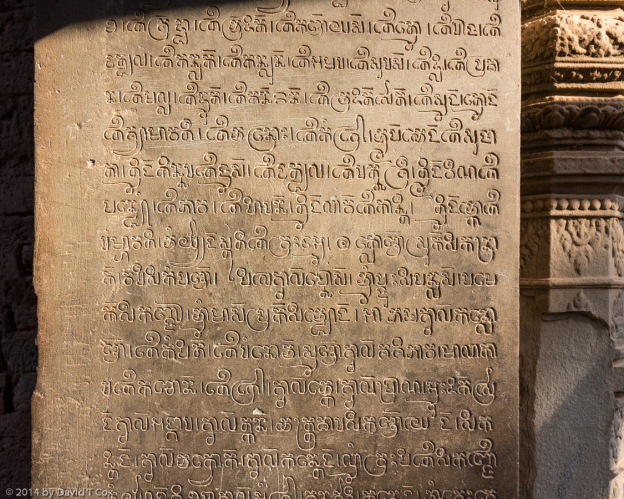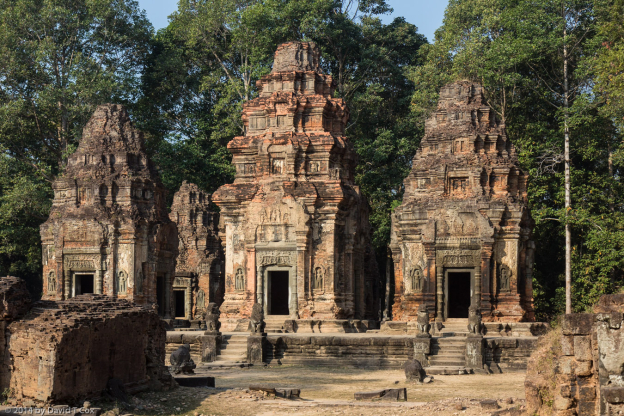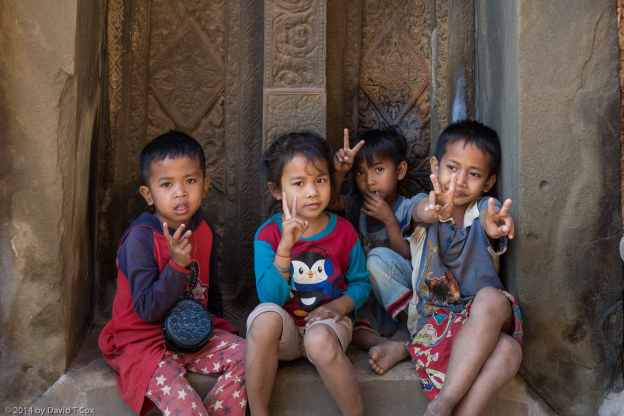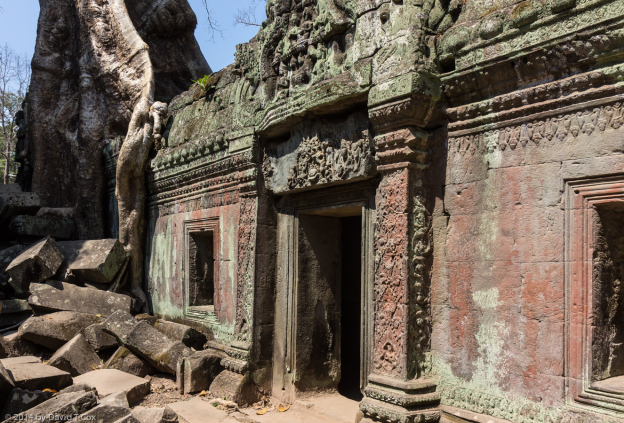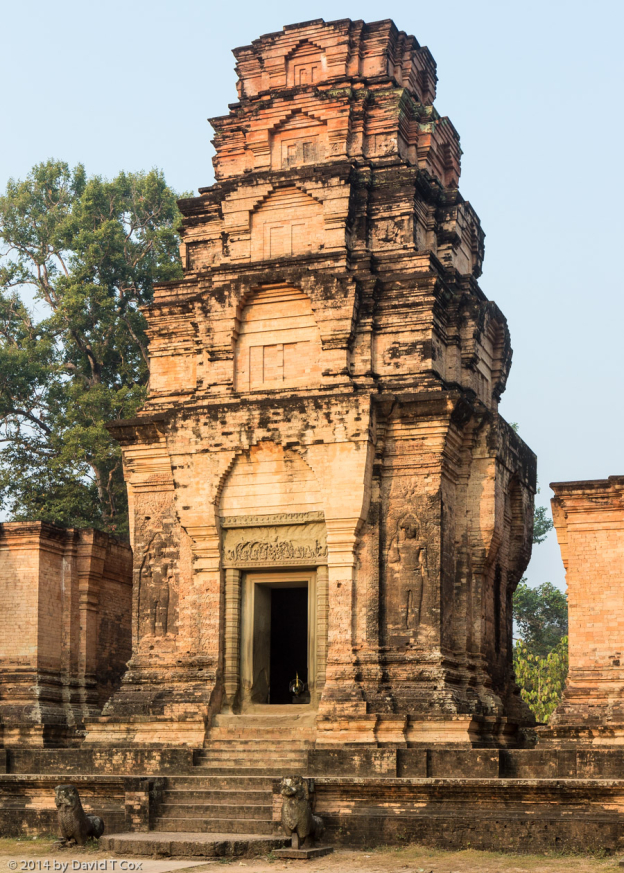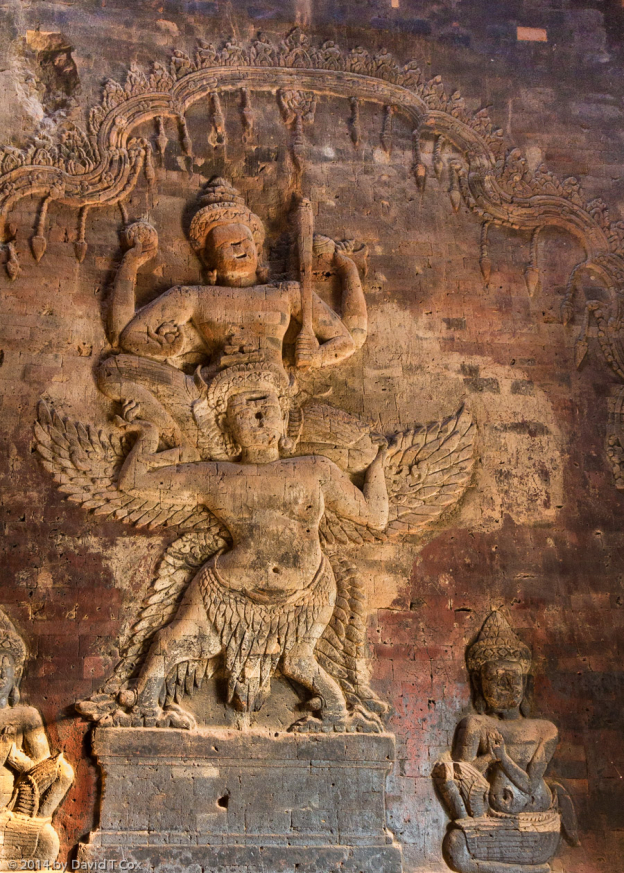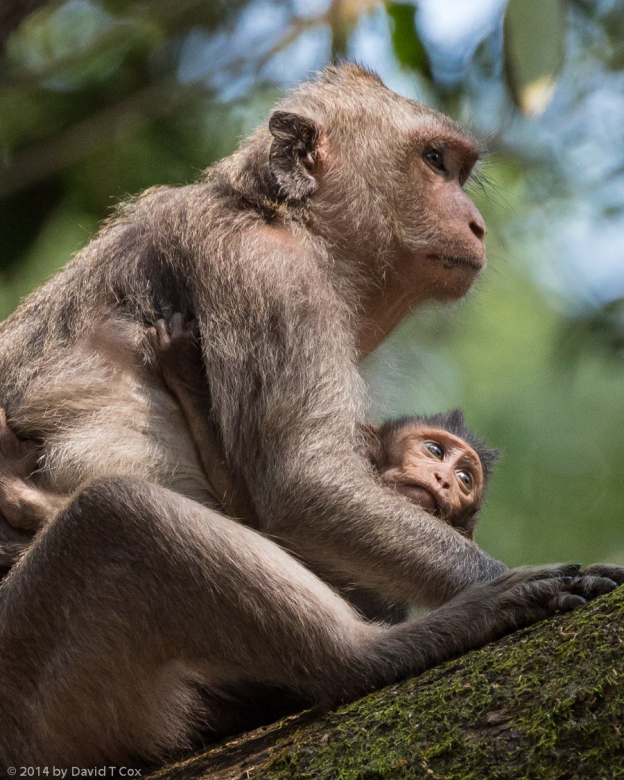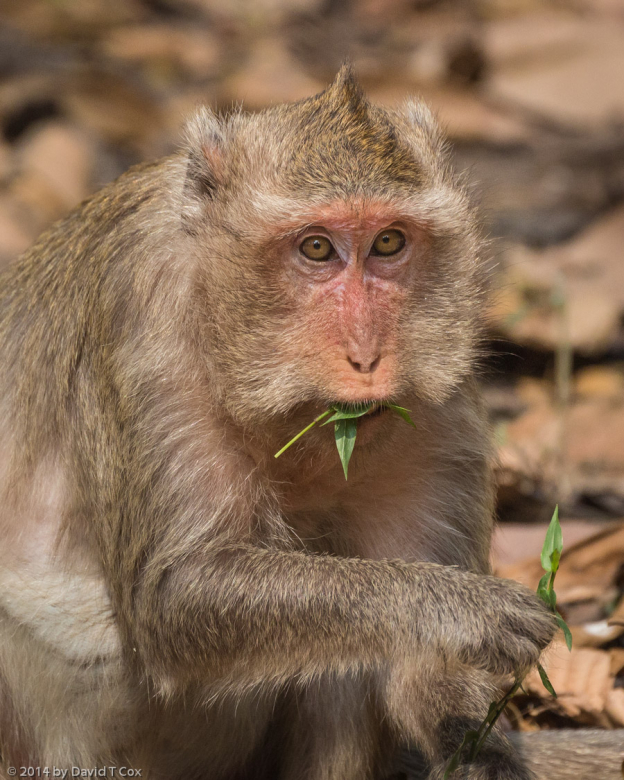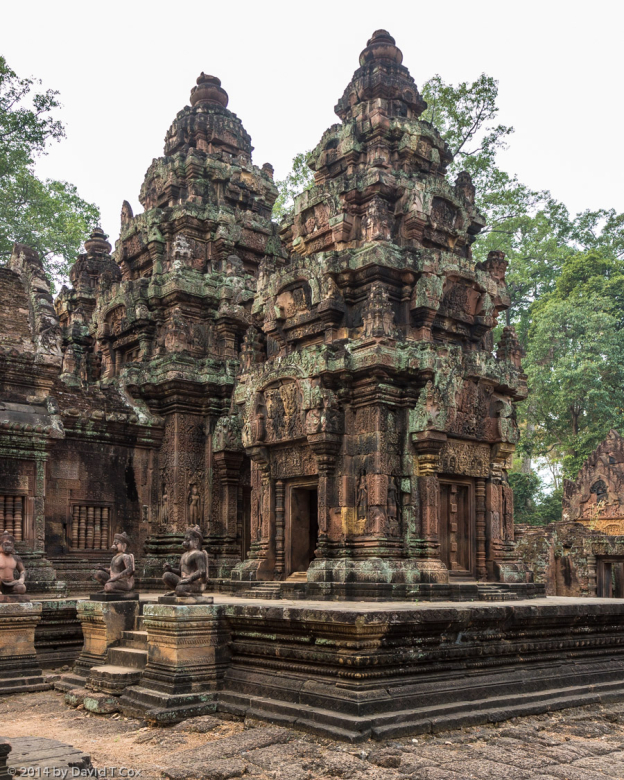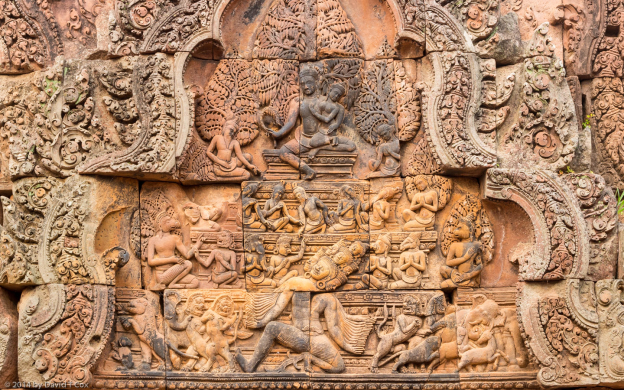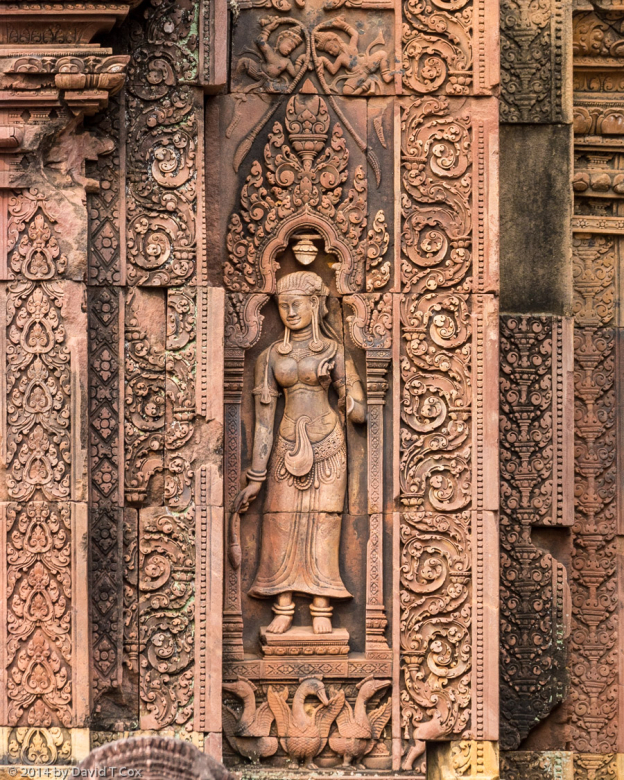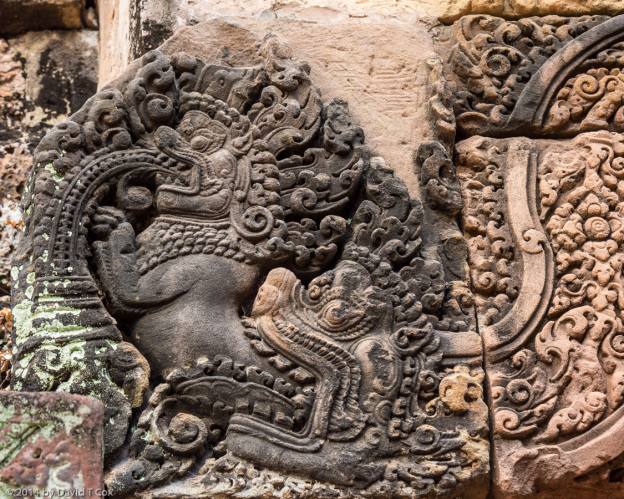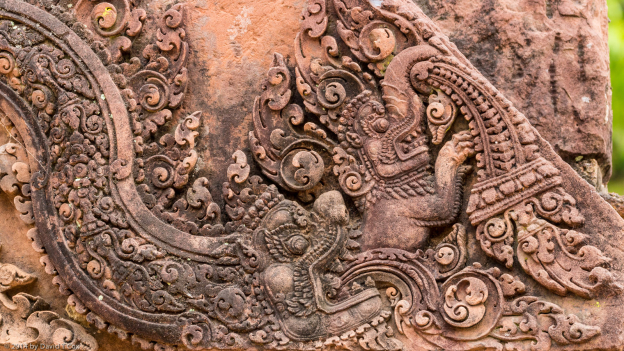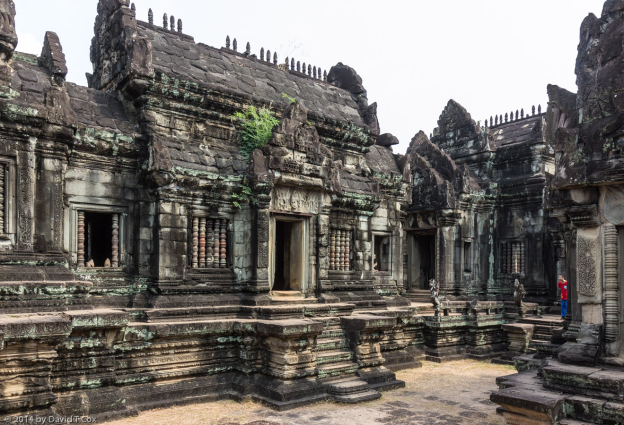All Photos Are Below the Travelogue Text
Click on Any Photo To Open Slide Show
To print the travelogue, right click anywhere on the page. Choose "Print" from your browser dialog box. You can choose Save to PDF in the browser print window.
Share your thoughts.
Email Dave - coxdavid55@hotmail.com
Hello all. I last wrote a week ago upon reaching Siem Reap, which lies in the central western part of Cambodia. Siem Reap is just a few kilometers south of the ancient capital of what became known as Angkor, and the seat of power during the Angkorian Empire (800-1200AD) and the subsequent fragmentation and decline of the culture (1200-1500AD). It also lies just to the north of the northwestern edge of Tonle Sap Lake and a great area of wetlands to the west, prime area for a number of endangered birds.
Siem Reap is the tourist capital of Cambodia – no other town even compares. In its heart, near the old market called Psar Chas, some of the “restaurant” streets may have 15 restaurants per block, and many streets have as many as 8 mid-range and cheap hotels or guesthouses per block. It seems a majority include the word “Angkor” somewhere in the name, and so become confusingly impossible to identify. Around the perimeter of the old town are dozens of upper mid-level hotels. On the main boulevards heading north towards Angkor, and the highway heading towards Phnom Penh, are literally dozens of gigantic, 3 to 4 story, world-class 5 star hotels, each with hundreds of rooms and with acres of manicured land surrounding them. I had called ahead from Kompong Thom the day before arrival to reserve a room, as it is high-tourist season. Although my travel guides said obtaining rooms was not a problem, I called 5 hotels before finding one with one remaining room available. That guesthouse was fine, but on my fourth day, as I had not specifically told them how long I was staying, they informed me they had booked the room for someone else – they did this after I was in the room for 3 days, without telling me. Turns out Siem Reap was seeing a record number of tourists this year, Chinese New Year was January 30, and Chinese tour groups literally have filled Siem Reap for the last two weeks of January and still are filling the town. Non-tour group travelers are simply not finding rooms. I walked to 13 hotels on January 31 before finding 1 lone room; that room was terrible – curling linoleum floor, tiny, no hot water, overpriced, etc. – and they required me to pay for two days in advance to get the room (which I was happy to do to avoid sleeping on the street). The next day, thinking the Chinese New Year week and weekend had passed, I ventured forth for the second time looking for a room; Another 5 full hotels and then I found the perfect spot at the “Our Best Western Guesthouse” (they’ve covered over the name on the outdoor sign – I assume there has been trouble with use of the name). The guesthouse is owned by an Australian, and I simply cannot believe the value. I have a large double room, spotless new tile, beautiful built-in furniture with hidden fridge, cable, Wi-Fi, AC, large bathroom with tub and hot water (no shower curtain so the floor gets wet), highly rated restaurant by Trip Advisor, for $15 a night – I have not found a better deal in the world.
Last Thursday I booked an all-day excursion with a fellow traveler I met at Sam Veasna Center, a highly rated company founded to help preserve the surrounding wetlands and encourage sustainable tourism for the endangered birds and wildlife (it utilizes the local villagers to act as rangers, guides, boatmen etc. such that their livelihood becomes based upon preserving the wildlife). Two great preserves sit at the northwest of Tonle Sap Lake; Prek Toal, a UNESCO Biosphere site, with rare shorebirds such as the Spot-billed Pelican and Greater Adjutant Stork, and Ang Trapaeng Thmor Wetlands Preserve west of the lake where we spent 13 hours. We saw perhaps 70 Saras Cranes, countless Painted Storks, a Black Baza, the extremely endangered Eld’s Deer, and 14 other new, for me, species of birds. Unfortunately for photos, almost all birds (and deer) were at spotting scope distances, so not conducive to the capture of the type of wildlife images to which I aspire. Still – a terrific outing, albeit rather expensive by my standards. I still hope to find someone to share the cost of a trip to Prek Toal; alone it would set me back well over $300 for the day.
The temples and ruins of the Angkor Empire are spread over roughly a large square area of 20 by 20 kilometers, with Siem Reap being located at the southwest corner. Almost the entire area is protected as a National Park, and decent narrow paved roads lead by the 20 or so major temple sites, with countless other temples accessible along dirt roads or by hiking trails. The entire Angkor Park temple system is a UNESCO World Heritage Site. Day entrance passes cost $20, but multi-day passes are available. I bought a 7-day pass for $60, good for any 7 days in a 1 month period. This is good for as many temples as one can visit during 7 days; I have now used 4 of those days, and visited 14 sites, several of which I intend to return to a second time. I have traveled to the sites by tuk tuk, using the same driver, David, each day. When exiting some of the larger sites, the parking areas for the tuk tuks are massive, and all tuk tuks look basically identical, with the drivers normally sleeping in the back until their ride returns. As I usually exited the larger sites on the opposite side of entrance (to avoid a couple of kilometers backtracking), finding the tuk tuk was a problem. The first day, after Angkor Thom, I spent 20 minutes unable to find my tuk tuk, and finally had to sit at a vendor’s shack to buy a cold drink, and call the hotel to in turn call my tuk tuk driver and tell him where I was. My driver now knows to find me when I exit.
The most famous temple, of course, is Angkor Wat, built by Suryavarman II around 1150, it is just a 15 minute tuk tuk ride to the north of Siem Reap. Although not my favorite, it is easy to appreciate its claim to fame. First, the sheer staggering size; The entire outer perimeter measures almost a mile on each side, with a 200 meter wide moat enclosing the entirety. The moat is crossed at the western side by a huge stone causeway. Inside the moat a 9 foot stone wall (all is constructed of huge carved blocks of stone, without mortar) completely encircles the site. Inside the wall today is mostly jungle – I do not know what filled the site originally. A long causeway stretches eastward from the wall about half a kilometer to the inner walls which surround the temple proper, the part usually seen in photographs. This interior temple proper, constructed of huge carved and fitted blocks of sandstone, covers just over 10 acres (4 hectares), and contains the famous towers surrounded by hundreds of meters of galleries (raised, roofed stone porches running the entire perimeter). The columns and walls of the interior temples are covered with etchings of “apsaras” (dancing women) and floral designs, and high reliefs of “devatas” (standing female divinities dressed in jewelry and the Khmer “sampot”, a skirt), and “dvarapalas” (male guardians at entrances). The gallery walls, hundreds of meters of them, are completely covered in bas reliefs, 8 foot high scrolling displays of various Hindu stories from the Ramayana and Bhagavata, among others – mostly huge battle scenes with hundreds of fighting men, gods in all incarnations, elephants, horses, mythical beasts and demons, etc. Actually, a few of the scenes are more domestic or commercial representing, apparently, certain trade with the Chinese and others. (Although it claims bragging rights as the largest religious structure on earth, Angkor Wat’s measurements to achieve that claim include the entire square mile, while the temple proper “only” covers 10 acres; The ruins of the massive Karnak Temple in Luxor, Egypt, if you consider it all one temple, is over 4 times the size of the temple proper of Angkor Wat).
Angkor Thom, to the north of Angkor Wat, was an entire walled city, with the roughly square layout enclosed by massive walls 3 kilometers on a side. It was built by Jayavarman VII around 1180, at the end of the Angkorian Empire period. The entrance ways, before passing through massive gates, pass across moats on broad causeways, lined on both sides by giant stone figures, lined in a row, all holding a giant naga (cobra), which forms a hundred meter railing. Inside the ruined city lie 3 great temples: the contemporaneous (very late Angkorian) state temple Bayon, the first temple mostly dedicated to Buddhism; the earlier Baphuon Temple (ca. 1060 by Udyadityavarman); and, earlier still, the relatively small Phimeanakas Temple(by Suryavarman I). Between the latter two was the king’s palace (Jayavarman VII), all of wood which has not survived. Set before is the massive (about 350 meters long) raised Elephant Terrace, upon which the king presumably sat, built upon huge stone walls “supported” by life-size reliefs of elephants and massive Garudas (Hindu eagle god). I enjoyed the overall impression of Bayon over that of Angkor Wat; Bayon was the state temple at the heart of Angkor Thom, and is the temple easily recognizable by its dozens of towers, each with the massive 4 stone faces looking to the 4 cardinal directions (One report says there are 230 faces). The faces possibly represent Lokesvara, a bodhisattva of Buddha, as this was the first state temple dedicated in part to Buddhism. Others note the similarity of the faces to those on other statues of the king, Jayavarman VII.
About 15 kilometers to the east of Siem Reap lie the Rolous Temples, the earliest Angkorian temples in Angkor, built by Indravarman I around 879 to 881 AD. The major Rolous temples are in three separate groups, Preah Ko, Bakong and Lolei. All temple towers are constructed of brick, as were the Chenla era (7th century), and early Angkor era, temples at Sambor Prei Kuk I last reported on. The outer walls contained the earliest devatas and dvarapalas carved in sandstone (earlier ones at Sambor Prei Kuk were of brick), set into niches in the brick tower exterior. Also, intricately carved sandstone was used for the door jambs and lintels; the door jambs contain some of the finest Sanskrit inscriptions, lasting now over 1,100 years. The sandstone construction of later Angkor temples, which permitted such detailed reliefs throughout the surfaces, apparently did not begin until some hundred years later. Another early temple complex of brick, Prasat Kravan, constructed about 921AD to the northeast of Rolous, has inside two of the towers marvelous brick reliefs of Vishnu and Parvati, Hindu deities.
Far to the north of most temple groups lies the structure known as Banteay Srei, built, not by a king, but by a dignitary, a King’s advisor, relatively early in the Angkorian period, around 967AD. It is a small set of structures by Angkor standards, but contains myriad of the most beautiful 3-D reliefs in a rose colored sandstone. The “devatas”, although among the earliest created, include some of the best sculptures in Angkor, with amazing facial expressions. The many lintels and pediments above the multiple entrances are simply covered in intricate scenes of Hindu battles, myths, deities, demons, and marvelous images of giant snakes devouring elephant demons or lion demons who in turn are devouring something else. See representative photos below.
I was fortunate to leave Siem Reap before sunup to arrive early, not only for good light, but because I arrived about an hour before the hordes of tour buses full of Chinese arrived. By the time I left, I judged 250 people already were walking to the ruins, which at best might permit 40 people to visit at a time if they wished to be able to see reliefs and take pictures; 100 people at a time might squish into the narrow spaces where one is permitted to walk around the structures, but allow no viewing space. As we were driving away, we were passed by 10 more full-size tour buses and dozens of smaller vans and tuk tuks (perhaps another 400 tourists). There simply is no way that number of people ever could visit the small site unless they were prepared to wait hours to enter.
The entire Angkor Park mostly is broadleaf forest, with canopies over 100 feet. High in the trees are the Greater Racket-tail Drongos and Red-breasted Parakeets. One of the interesting creatures commonly encountered are the troupes of Crab-eating Macaques; these often come out of the forest to the edge of the roads as the tourists and vendor’s kids love to feed them. This time of year most of-age females have relatively new-born clinging to them. Very cute and photogenic.
I have visited a number of temples other than those mentioned, but will stop with the details which are of interest to few but myself (I have visited Ta Prohm, famous for its almost complete takeover by giant kapok trees whose roots have demolished the walls, but today are entwined to hold them together from further collapse.) I intend to spend one of my remaining 3 pass-days visiting some additional temples, and the final two pass-days re-visiting Angkor Wat, Bayon and Ta Prohm to investigate further details. I also intend to visit the Angkor Museum here in town.
Restaurants certainly are plentiful. I have been mostly eating at the smaller low-price native places with Khmer food – lots of rice and noodle dishes. I have sampled 4 of the roughly 8 Indian restaurants I have passed on the streets, and find them generally good, although expensive by Khmer standards. I still am able to find beer for 50 cents a bottle or can, and so enjoy my late afternoon rest with book and pipe.
In roughly a week I expect to try to fly to Bangkok to start the Thai portion of my trip, protests permitting. Later. Dave
- Angkor Wat ca. 1150AD;, bas reliefs – W Gallery – S Section battle between Kauravvas (march from L) & Pandavas (march from R), Cambodia
- Angkor Wat ca. 1150AD; bas reliefs – W Gallery – N Section “Battle of Lanka, Cambodia
- Roluos Group, Lolei, by Indravarman I, 889-910AD, 1,100 year old Sanskrit inscription on door jamb, Angkor, Cambodia
- Prasat Kravan, Hindu temple built by non-royalty ca. 921AD, brick relief Vishnu on Garuda, Angkor, Cambodia
- Banteay Srei – ca. 967AD, Pediment detail, Angkor, Cambodia
- Banteay Srei – ca. 967AD, Pediment detail, Angkor, Cambodia
To print the travelogue, right click anywhere on the page. Choose "Print" from your browser dialog box. You can choose Save to PDF in the browser print window.
Share your thoughts.
Email Dave - coxdavid55@hotmail.com
